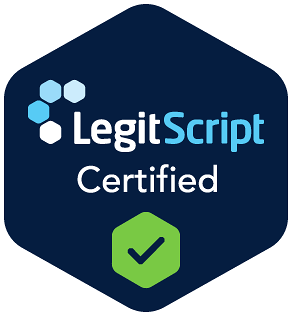At Primed Pharmacy®, we understand that aesthetic treatments can be both exciting and nerve-wracking. While the results can be transformative, the fear of needles and discomfort associated with local anaesthesia is a common concern.
However, local anaesthesia plays a crucial role in ensuring a comfortable and positive experience during many aesthetic procedures. Here, we explore best practices in administering local anaesthesia to enhance your experience;
Understanding Local Anaesthesia
Local anaesthesia is a medication used to numb a specific area of the body, temporarily blocking pain signals from reaching the brain. This allows for pain-free procedures during aesthetic treatments like dermal fillers, wrinkle relaxers (Botox), and some laser treatments.
There are two main types of local anaesthetics used:
- Lidocaine: This is the most common type and is often combined with epinephrine, which helps constrict blood vessels, reducing bleeding and swelling.
- Prilocaine: This topical anaesthetic is applied as a cream before injections, further numbing the area.
Communication is Key
- Pre-Consultation: Discuss your anxieties and pain tolerance with your healthcare professional during the consultation. They can explain the type of local anaesthesia used and the injection technique.
- Informed Consent: Ask questions and understand the potential side effects of the anaesthesia. Don’t hesitate to seek clarification on anything you’re unsure about.
Minimising Discomfort
- Topical Anaesthetics: Numbing creams applied before injections can significantly reduce the initial prick. Discuss this option with your clinician.
- Injection Techniques: There are various techniques to minimise discomfort. Some practitioners use a blunt-tipped needle for a smoother insertion or administer the anaesthesia slowly to lessen the pressure sensation.
- Temperature: Cold anaesthesia can sting more. Ask if your healthcare professional warms the solution slightly before injection.
Building Comfort
- Relaxation Techniques: Deep breathing exercises or guided meditation can help manage anxiety before and during the procedure.
- Distraction: Focus on calming music or conversation during the injection to divert your attention.
- Pain Management Tools: Some healthcare professionals offer devices that vibrate during injection, creating a distraction and reducing the perceived pain.
Additional Considerations
- Medical History: Disclose any allergies, medical conditions, or medications you’re taking during the consultation. This helps the healthcare professional choose the most suitable local anaesthesia.
- Aftercare: Follow your clinician’s instructions regarding post-treatment care, including any pain medication or cold compresses to reduce swelling.
What Primed Pharmacy® can offer your clinic?
We, at Primed Pharmacy®, are committed to your well-being. We can provide:
- Treatment Care: We offer a range of products from providing pain relief medication (prescribed and OTC), to post-treatment supplies (topical creams, cold compress, saline solution, wound care products etc).
- Information and Support: Our pharmacists can answer your questions about local anaesthesia and address any concerns you may have.
- Pain Management Solutions: We can discuss over-the-counter pain (OTC) relief options suitable for post-treatment discomfort (subject to pharmacist consultation).
- Open Communication: A positive experience starts with open communication. Don’t hesitate to speak up about your anxieties and preferences. By working together with your healthcare professional, we can ensure a comfortable and successful aesthetic treatment.
Please Note: This blog is for informational purposes only and should not be taken as clinical advice. Always consult a healthcare professional before undergoing any aesthetic treatment.




